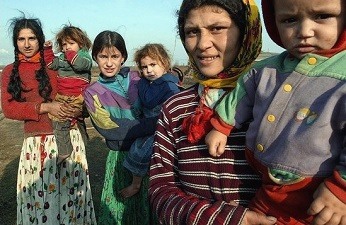Plight of Romanians and Hungarians in Ukraine
Vladislav Gulevich
The independent Ukraine boasts a rather short history. The relations with minorities have never been a feather in the hat of Kiev authorities. The real state of things was largely muted to make it a smouldering problem. The «national revolution» has exacerbated the situation to the boiling point, especially talking about Hungarians and Romanians.
Romanians are the second largest group in Bucovina (historically the region has been Russian, now the northern part of it belongs to Ukraine). 97% Romanians live in Chernovitsy (115 thousand) and Transcarpathia (32 thousand). According to CEMES (Centre for European Migration and Ethnic Studies), the main problems faced by the Romanian community are social development and their low representative proportion in higher education and in professional work. Numerous reports from Romanian-based sources raise concerns for the situation of the Romanian minority in Ukraine and specifically criticize the availability of educational opportunities in the Romanian language. The 2012 law «On the principles of the state language policy» was abolished as a result of the 2014 coup pouring even more fuel on the discontent among Ukrainian Romanians. Kiev refuses to acknowledge any wrongdoing when reproached for its neglect of Romanian culture. This attitude makes the situation worse. In June 2014 the Bessarabia Romanians held a convention in Odessa with assistance of Romanian Cultural Institute (Romania). There were many voices raised calling for opening new Romanian cultural centers (there are too few of them and quite often the staff has no command of the language). The head of Odessa regional national-cultural association Bessarabia said that the main problem for the Romanian community in the Odessa region is the availability of schools teaching in Romanian language and their funding.



























